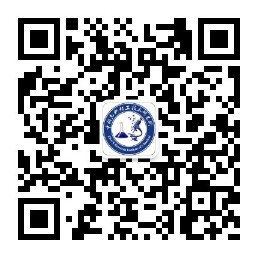欢迎访问中科光析科学技术研究所官网!
- 联系我们
- 关注微信

欢迎访问中科光析科学技术研究所官网!

免费咨询热线
400-635-0567|
指定的低功率无线电设备检测项目报价? 解决方案? 检测周期? 样品要求? |
点 击 解 答  |
本标准规定了电工术语中有关无线电通信的术语和定义。 本标准适用于我国涉及无线电通信的所有科技领域。
本标准规定了9kHz~300GHz频段内无线电发射设备的频率容限、杂散域发射功率限值要求和通用测量方法,同时确定了不同无线电发射类别必要带宽的计算公式。本标准适用于9kHz~300GHz频段内的不同功率等级、不同类别的无线电发射设备。但不适用检测营救器电台或水上发射机等安全业务和特别业务的杂散域发射指标。
本标准规定了无线电管理的术语及其定义,包括一般术语、有关频率管理的专用术语、无线电业务、各种无线电台与系统、操作术语、发射与无线电设备的特性、频率共用、空间技术术语。本标准适用于国内无线电管理领域涉及引用或使用无线电管理术语的各类应用。
GB/T 17626的本部分适用于电气、电子设备的电磁场辐射抗扰度要求,规定了试验等级和必要的试验程序。本部分的目的是建立电气、电子设备受到射频电磁场辐射时的抗扰度评定依据。在本部分中给出的试验方法描述了评估设备或系统抵抗一定环境的抗扰度的符合性方法。本部分适用于防止所有发射源的射频电磁场的抗扰度试验。特别关注对防止数字无线电话和其他射频发射装置的射频辐射。本部分是一个独立的试验方法。不可使用其他试验方法替代来声称符合本部分。
本标准规定了采用D级数字选择性呼叫(DSC)甚高频(VHF)无线电话的船载固定设备一般通信的基本要求。这些要求包含ITU《无线电规则》及定义D级设备的ITU-R M.493-10建议案的相关条款,并结合了IMO MSC/Circ.803、MSC/Circ.862和MSC.131(75)决议中详述的相关指南。本标准还规定了设备及系统的技术特点、测试方法及要求的测试结果。附录D在强电磁环境下工作设备的推荐性标准作了说明。
本标准规定了工业机械电气、电子设备及系统在射频电磁场中的辐射抗扰度的试验方法,包括试验等级、试验设备、试验布置、试验程序、试验结果的评定和试验报告。本标准适用于工业机械电气、电子设备的电磁场辐射抗扰度试验,它规定了试验等级和必要的试验程序。本标准适用于第4章规定的频率以内的辐射抗扰度试验。本标准不适用于防治数字无线电话的射频辐射抗扰度试验。
本标准规定了核电厂从建造到运行整个寿期的火灾预防、探测和灭火的要求。 本标准适用于轻水堆、重水堆和气冷堆类型的核电厂,对钠冷快中子增殖堆没有特别地论述,但是在这些导则中可以找到可用于快中子增殖堆系统的防火措施。
This Recommendation is intended to provide a basis for the derivation and estimation of the values of electromagnetic radiation from a broadcasting station that occurs at particular distances from the transmitter site. Using such information, responsible organizations can then develop appropriate standards that may be used to protect humans from undesirable exposure to harmful radiation. The actual values to be applied in any regulation will naturally depend on decisions reached by responsible health agencies, domestic and worldwide.
) that recent developments in HF system techniques make it possible to achieve the following
High operational flexibility, easy maintenance of equipment requirements make HF system techniques very useful in world communications; this is particularly emphasized in the case of large geographical areas with low density of telegraph, telephone and data traffic.
Increasing requirements in the HF fixed and mobile services are driven by two factors. Firstly, other technologies do not meet all requirements. This is especially true in publicprotection and disaster relief operations. Ease of deployment and comparatively lower costs continue to make HF fixed and mobile applications desirable duringthe development of a crisis situation. The second factor is the emergence of HF advanced technologies which allow development of applications to exchange more information at higher data rates.
The purpose of this report is to summarize the result of the studies on sharing the 36-37 GHz band by the fixed and mobile services and the Earth exploration-satellite service (EESS) (passive).
There are various types of intermodulation that can be found. In radio systems, these are manifested in a number of ways and defined as the following five types in Rec. ITU-R SM.1446
This Report presents an overview of Inspections Procedures in response to Question ITU-R 225/1 regarding inspection techniques and procedures. The Question relates to how administrations proceed in planning and conducting radio station inspections. The purpose of this Report is to provide general guidelines for planning and performing inspection activities on various types of radio stations. Inspection activities often include review and verification of both technical and administrative conditions assigned to a radio station or other spectrum user. Although the term “licensed” is used throughout the document, this term can be considered here to include not only stations with licences issued by the regulatory authority, but also other authorized spectrum users (such as those operating with “licence exempt” devices like low-power radios and RF devices operating under equipment standards approval). The primary focus of this report is to consider inspections that are conducted “on-site”, by visiting the transmitter location. Included in Annexes are some specific examples in certain services, toprovide examples of howthe general guidelines can be applied. This Report should be considered a general guidance document for inspections planning.
Countries around the world are in the process of migrating from analogue to digital broadcasting techniques for both television and radio. This Report looks at sound broadcasting in the bands below 30 MHz. It briefly examines the underlying reasons for the migration and looks at the technologies involved. Its focus is the DRM system as developed for use in the LF, MF and HF bands. The Report is intended to: 1) Explain why and how a broadcaster might go digital. 2) Be a reference technical document for DRM planning. 3) Provide new information based on the practical experience in DRM. 英:planning parameters;coverage;digital radio mondiale;broadcasting;frequency
 前沿科学
微信公众号
前沿科学
微信公众号
 中析研究所
抖音
中析研究所
抖音
 中析研究所
微信公众号
中析研究所
微信公众号
 中析研究所
快手
中析研究所
快手
 中析研究所
微视频
中析研究所
微视频
 中析研究所
小红书
中析研究所
小红书